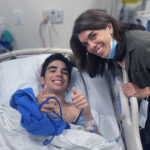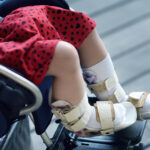Cerebral palsy hasn’t stopped Irvin from living large

Irvin, now 18, became fascinated with sports mascots when he was a little kid. What did they do, and could he do that too? Anytime he had an appointment at the Cerebral Palsy and Spasticity Center at Boston Children’s Hospital, he and his mother would stop by Fenway Park to visit Wally, mascot of the Boston Red Sox. Since then, he has pranced around stadiums as a legendary thunderbird, scruffy dog, proud Minuteman, and noble eagle. Here’s what he’s experienced throughout the years.
Boomer: Gaining a new sense of freedom

Irvin, who was born with cerebral palsy (CP), was 13 when he got his first gig as Boomer, the furry face of the Springfield Thunderbirds hockey team. “It was definitely an accomplishment,” he says. Like many kids with CP, he wore braces to help with his gait. Most days he felt self-conscious about the braces, especially at school. But being a mascot gave him temporary freedom. Even with many eyes trained on him, no one could see the braces inside his costume. He could relax and focus on stirring up team spirit.
Paws: Getting stronger
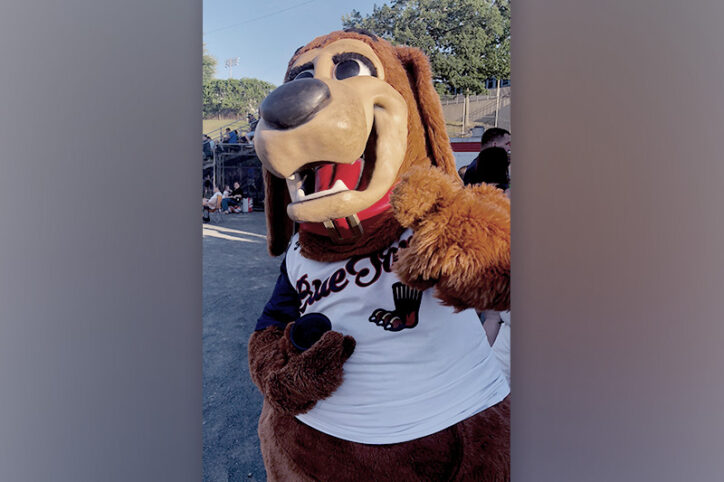
Soon, Irvin was hyping up fans of the Valley Blue Sox baseball team as Paws the lovable canine. His team at Boston Children’s also helped him live his dream by using Botox injections to manage spasticity in his legs, physical therapy to strengthen and develop his muscles, and proactive monitoring to prevent further complications. Dr. Benjamin Shore and Dr. David Fogelman cheered him on through the years and helped him stay focused on getting stronger. “They motivated me to push my limits,” he says.
Sam the Minuteman: Saying ‘so long’ to braces
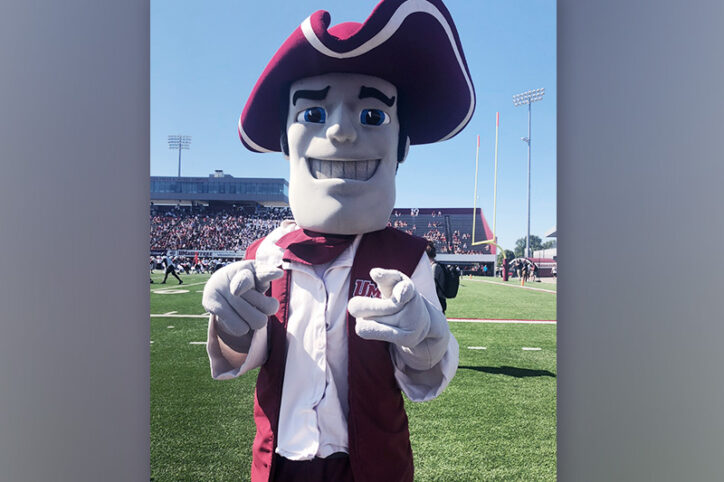
As Irvin’s reputation as a mascot grew, more teams asked him to be their guy. Roles as Sam the Minuteman (University of Massachusetts Amherst) and Nestor (Westfield State University Owls) followed. All the while, his commitment to his team at Boston Children’s was paying off. By the time Irvin was 16, his legs had grown strong enough to go brace free. He experienced his new ease and mobility with a mix of disbelief and excitement. “When I was young, I couldn’t run, and I walked funny. Now I can run, I can jump, I’m a free guy.”
Freedom: Moving ahead
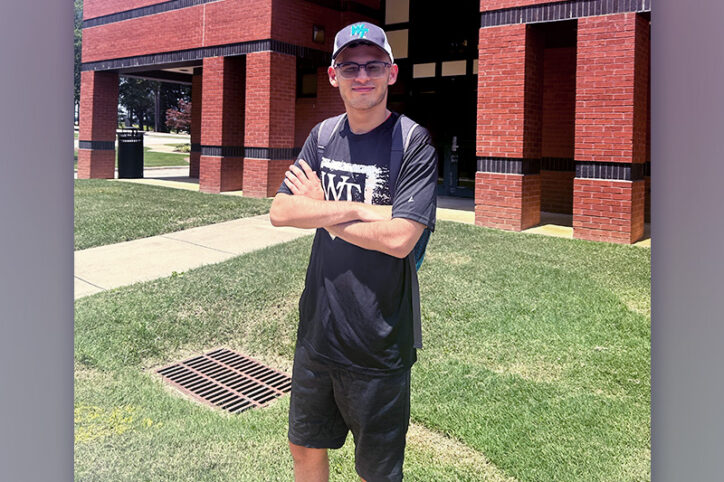
Soon after Irvin walked away from his braces, he and his family moved to North Carolina. There, his life as a mascot expanded. He currently represents two teams: the Houston Astros minor league baseball team as Bunker and USA Baseball’s Collegiate Travel Team as Freedom. Compared to his early days as a mascot, he can move more quickly, jump, even dance during his performances.
Talon: Taking the next step

Having graduated from high school in the spring, Irvin’s looking forward to majoring in sports marketing at Wake Tech Community College this fall. But he won’t be just any college student. He’ll also be Talon, mascot for the Wake Tech Eagles.
Learn more about the Cerebral Palsy and Spasticity Center.
Related Posts :
-

Lacrosse, cerebral palsy, and leadership: Luke’s story
When he returned to lacrosse after surgery on his left leg, Luke Kilfoyle wasn’t nervous. In the five and ...
-

A cerebral palsy journey lands in Boston: Ashlyn’s hip surgery
Eleven-year-old Ashlyn’s parents describe her as spicy, strong willed, and determined. Those qualities have served her well through a ...
-

Research offers guidance on genetic testing for cerebral palsy
A recent meta-analysis confirms what a small study at Boston Children’s found last year: About 1 in 4 children with cerebral ...
-

Rethinking the origins of cerebral palsy
Cerebral palsy (CP) has widely been viewed as the result of perinatal oxygen deprivation or other birth-related factors like prematurity. ...


